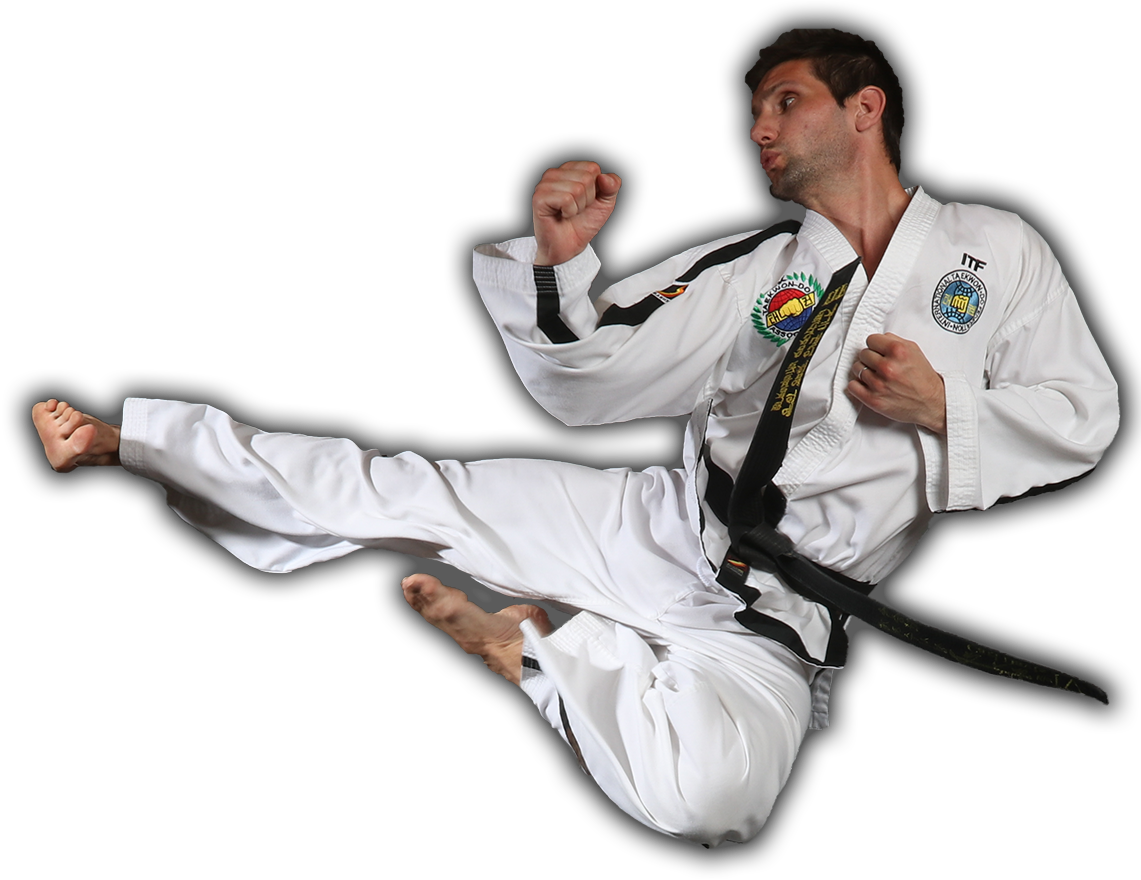



Hwa-Rang Is named after the Hwa-Rang youth group which originated in the Silla Dynasty in the early 7th century. The 29 movements refer to the 29th Infantry Division, where Taekwon-Do developed into maturity.
Q1 - What is the meaning of Hwa-Rang?
Q2 - What is the meaning of Red belt?
Q3 - Name & display a minimum of 11 stances
Q4 - Name & display as many uses of Forefist Punch (Ap Joomuk) as possible.
A1 - Hwa-Rang Is named after the Hwa-Rang youth group which originated in the Silla Dynasty in the early 7th century. The 29 movements refer to the 29th Infantry Division, where Taekwon-Do developed into maturity.
A2 - Red belt signifies danger, cautioning the student to exercise control and warning the opponent to stay away.
A3 - STANCES
* Attention stance - Charyot Sogi
* Parallel stance - Narani Sogi
* Sitting stance - Annun Sogi
* Walking stance - Gunnon Sogi
* L-stance - Niunja Sogi
* Bending stance - Guburyo Sogi
* Closed Stance - Moa Sogi
* Rear foot stance - Dwitbal Sogi
* Low stance - Nachau Sogi
* X-stance - Kyocha Sogi
* Fixed Stance - Gojung Sogi
* Vertical stance - Soojik Sogi
* One-legged stance - -Waebal Sogi
A4 - Uses of Forefist
* Front Punch - Ap Jirugi
* Forefist Pressing Block - Ap joomuk Nolliyo Makgi
* Horizontal Punch - Soopyung Jirugi
* Upward Punch - Ollyo Jirgui
* Downwards Punch - Naeryo Jirugi
* Vertical Punch - Sewo Jirugi
* Upset Punch - Dwijibo Jirugi
* Angle Punch - Giokja Jirugi
* Turning Punch - Dollyo Jirugi
* Crescent Punch - Bandal Jirugi
Upward Punch - Ollyo Jirugi
Knifehand Downward Strike - Sonkal Naeryo Taerigi
Side Elbow Thrust - Yop Palkup Tulgi
Palm Pushing Block - Sonbadak Miro Makgi
Forearm SideFront Block - Palmok YopAp Makgi
The Theory of Power
A useful way to remember The Theory of Power is think CREMBS: Concentration, Reaction Force, Equilibrium, Mass, Breath Control, Speed.
Each component is vital in creating as much Power as possible in each technqiue, they all work together to produce the Unforgtable Memory to an oncoming opponent who may be trying to cause you harm.
Concentration - By applying the impact force onto the smallest target area, it will concentrate the force and therefore, increase its effect.
Reaction Force - Every action has an equal & opposite reaction. Regarded as the most important component, without Reaction Force, no technqiue will be at its full capacity & destructive value.
Equilibrium - A balanced body is very important when executing any technqiue, to ensure you are as stable as possible when defending yourself & making an attack more effective plus deadly.
Mass - The heavier you are the more potential you have to produce higher levels of Power. This is why larger people find breaking boards easier, but can often be "out-broken" by a smaller person who can apply the other components of the Theory of Power more effectivley.
Breath Control - A sharp exhaling of breath at the moment of impact, tense the abdomen to concentrate maximum effort on the delivery of the technqiue.
Speed - Force = Mass x Acceleration. The faster you can throw a technqiue, the more powerful its force will be, this is why when attempting to break boards you will hear Mr Davis tell you "Speed is key!"